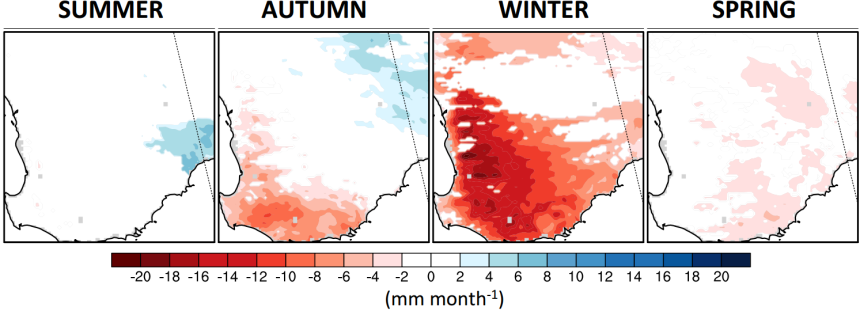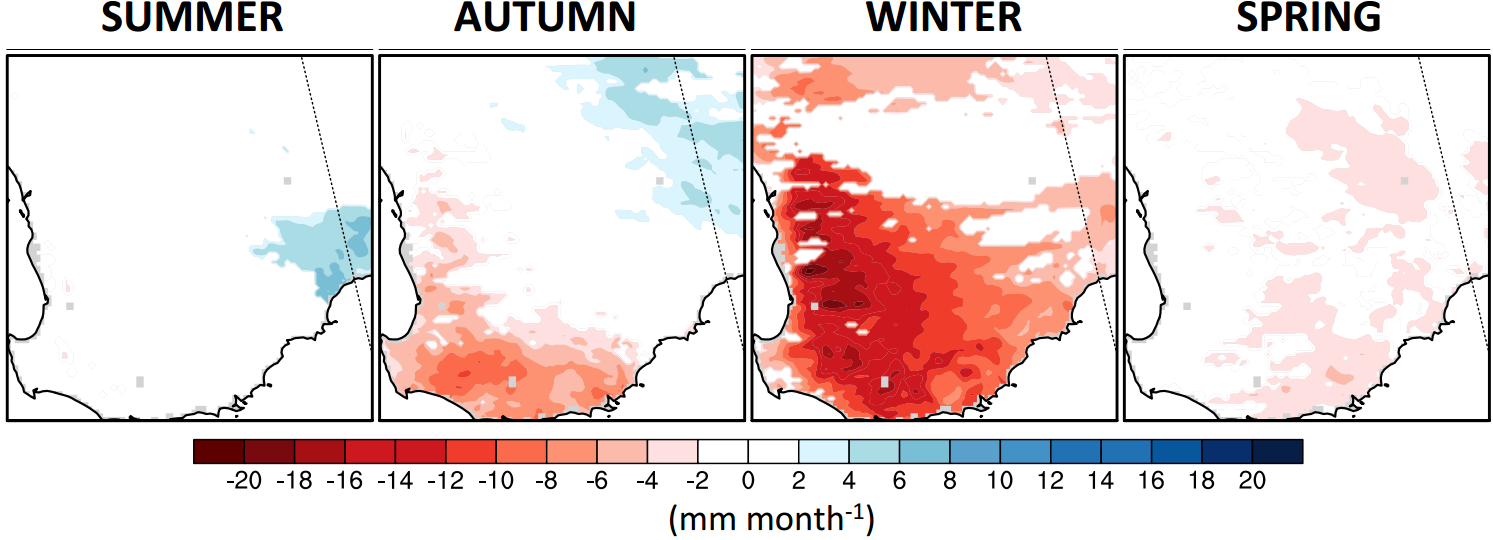New ‘hotter and drier’ climate warning for south west WA coast

Future climate uncertainty drives demand for higher resolution climate data to support decision making in industries such as agriculture, forestry, conservation and urban planning. Recent research by Julia Andrys and her colleagues of Murdoch University, examining climate projections in south west WA (SWWA), has found that coastal regions in the area could become hotter and drier than previously predicted.
The researchers used the Weather Research and Forecasting model (WRF) to find that projected temperature increases appear to be highest in areas where rainfall decline has been greatest. The image below shows expected changes in rainfall across the study region.
These figures show the expected seasonal changes in SWWA rainfall
“Because rainfall reductions have been the largest near the coast, these regions are expected to experience the largest temperature increases.” said the researchers.
According to Ms Andrys “Winter rainfall decline is caused by fewer rain bearing frontal systems traversing the region, and hence fewer rain days. The linking of the highest temperature increases with areas of greatest rainfall decline has significant implications for the region, in particular for forestry resources. Previous research has linked high forest mortality rates to higher than average temperatures combined with prolonged drought periods in SWWA.”
The projections also show an increase in night time temperature variability, which means that extreme night time temperatures are likely to become more common in the future. The number of frost days in SWWA is also expected to decline and a further reduction in winter rainfall is also projected.
The scientists used the weather Research and Forecasting model to compare SWWA climate projections from 2030-2059 with the historical period 1970-1999. What they found was that the projected changes were consistent with forecasts made from general circulation models, but interesting findings emerged when they looked at temperature and precipitation in specific areas.
According to Dr Jatin Kala, one of the paper’s authors, SWWA is already at risk of substantial negative impacts if measures are not taken to adapt to future climate change because of its status as a biodiversity hotspot and agricultural centre.
“Detailed climate modelling provides the region with a key insight into its future, helping to prepare and manage the effects of climate change,” he added.
The scientists said the next stage of their research would be to refine their data to correct the biases inherent in climate modelling to make the outputs more useable by impacts researchers.
Their research was supported by resources provided by the Pawsey Supercomputing Centre with funding from the Australian Government and the Government of Western Australia, as well as a PhD top-up scholarship from the Grains Research and Development Corporation.
Article: ‘Regional climate projections of mean and extreme climate for the southwest of Western Australia (1970–1999 compared to 2030–2059)’, Climate Dynamics, doi: 10.1007/s00382-016-3169-5

